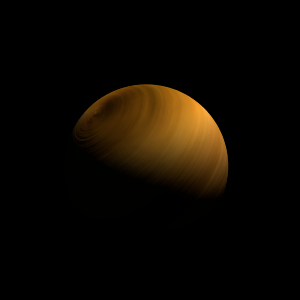|
|
Space Astro
|
Info for exoplanet "Lenepor"
| Scientific (actual) data |
|---|
| Name | K2-285 b |
| Planet status | Confirmed |
| Planet mass | 0.03046 |
| Radius | 0.231 |
| Orbital period | 3.47175 |
| Semi major axis | 0.03817 |
| Orbit eccentricity | 0 |
| Inclination | 86.846 |
| Discovered | 2018 |
| Updated | 2021-02-05 |
| Tconj | 2457740 |
| Tzero tr | 2457740 |
| Impact parameter | 0.57 |
| K | 4.62 |
| Temperature (kelvin) | 1089 |
| Publication | Published in a refereed paper |
| Detection type | Primary Transit |
| Mass measurement type | Radial Velocity |
| Radius measurement type | Primary Transit |
| Alternate names | EPIC 246471491 b, 2MASS J23173222+0118010 b, WISE J231732.23+011800.6 b |
| Star name | K2-285 |
| Right ascension | 349.38° |
| Declination | 1.3° |
| Mag v | 12.03 |
| Mag j | 10.477 |
| Mag h | 10.069 |
| Star distance | 155.65 |
| Star metallicity | 0 |
| Star mass | 0.83 |
| Star radius | 0.79 |
| Star sp type | K2 V |
| Star temperature | 4975 |
| Star alternate names | EPIC 246471491, 2MASS J23173222+0118010, WISE J231732.23+011800.6 |
| Wikipedia article | K2-285 b |
Back
| |
| Fictional info (?) |
|---|
| Suggested name | Lenepor |
| Planet type | Small hot gas planet |
| The helium has probably photodissociated, and the free carbonyl sulfide has been swept into interplanetary space by the solar wind because of the lack of a planetary magnetic field.
The smooth Borealis basin in the northern hemisphere covers 24 percent of the planet and may be a giant impact feature. |
| Atmosphere | Carbonyl sulfide | 84% |
| Formaldehyde | 13% |
| Helium | 2% |
| Xenon | 0.4% |
| Neon | 0.063% |
| 2H2O | 0.035% |
| Ethane | 0.014% |
| Atmospheric pressure | 3 bar |
 |
| No known satellites |
| Google search for Lenepor |
|
Website by Joachim Michaelis
|
|
|
|